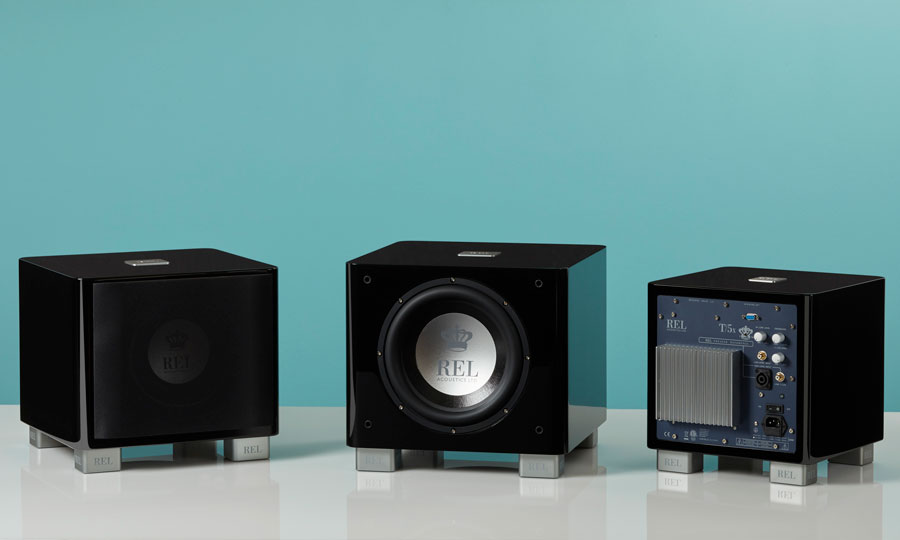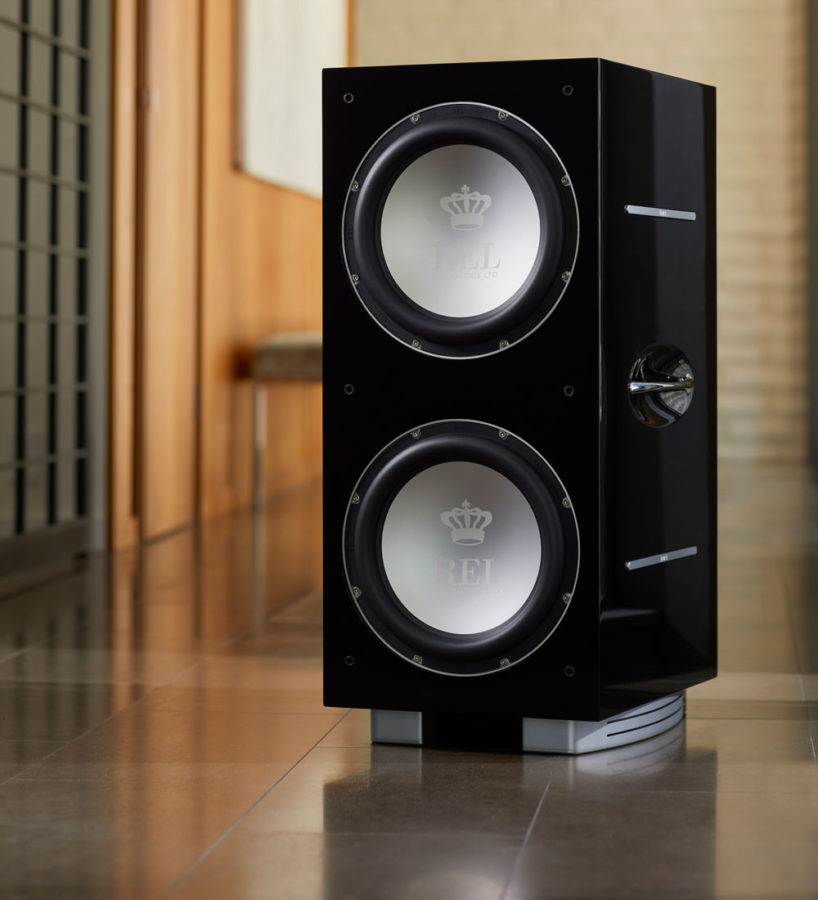Blog
Why You Can’t Stack T/x
The reasons only Serie S and Reference models Are designed to be a line array
If you’re seriously into high end audio you’ve likely heard the excitement from customers and stores alike as they setup and experience for the first time a REL Line Array. With all the buzz around our stackable Line Arrays, one would be forgiven for presuming that our latest offerings, Serie T/x, would automatically be delivered with this option. Yet we don’t offer Line Arrays for the T/x. What gives? Is REL out to harsh normal folks’ enjoyment of the hobby? Far from it. But we do care about safety. And, too, there comes a point of diminishing return and of losing the point of the exercise which we’ll dig into below.

A brief description of a REL Line Array is of (3) REL Serie S models (or Reference Level), that are designed from the outset to be safely stackable, and come with metal couplers, bolts and special inserts that work togethesr to strap stacked RELs into a single, heavy column. A stack needs to weigh around 200 pounds+ to be on the safe side in order for it to not be susceptible to accidental toppling (90 kg). If you look at our offerings, you’ll see that our lightest stackable design, the S/510, weighs in at 210 pounds in a stack of three. While an S/812 stack comes in at 235 pounds and is exceedingly difficult to move or knock over by normal means. By normal I mean minor events like a large dog bumping into it would likely result in a short exhalation of air and maybe a yelp. Turning to our Reference models, they are simply so heavy and inert that they don’t move so we don’t supply couplers, provided the floor is fundamentally stable and doesn’t act like a trampoline. A Reference Line Array can weigh over 500 pounds per side.

Now let’s look at what would happen if even the largest T/x were to be stacked, how heavy would it be? How much would it cost? And how much sense would it make in the context of a likely system it would be paired with? First the easy part, weight would come in at around 136 pounds for the flagship T/9x. Heavy, but far short of the 200-pound minimum weight needed to resist life’s minor bumps and bangs. Why unstable? Because the T/x range, which are designed solely to be used singly or in pairs, come fitted with nicely machined aluminium feet. These work perfectly for their intended purpose but are not nearly as heavy and are not as stable as the rails used on Serie S and our Reference models. For T/x to be stackable, we would have to design and produce a heavy, additional bolt-on base to create enough stability for the stack to be considered stable and safe. This would cost real money, more than you might think with global shipping costs going through the roof. $500 for a pair ($250 each) wouldn’t be a stretch once all the hardware and packaging is added in.
So then, let’s look at the practicality and the real life match up of a Line Array (6 total, 3/side) with a speaker. We’ll use the B&W 702 and KEF R-11 as widely available offerings often paired with the T/9x. Both run around $5,000-5,500. Let’s say our buyer in this little case study is doing pretty well and decided to buy a pair of T/9x. In the US, that would come in at $3100/pr., add another $6200 to purchase the next two pairs to build your very own mini-6 pack and we’re at $9300. And that still requires this mythical (as in DOES NOT EXIST) heavy, spiked base that would add hundreds of dollars to the cost. Call it $10,000 by the time it all comes together, and you add cables. As much as we’d love to have folks buying 6-packs of Serie T/x, this makes little sense to us. And before your argumentative, fun-loving self runs away with your brain, think again long and hard about how truthful you’re being with yourself. Do you really see yourself plunking down $10,000 for a stack of RELs to partner with a speaker half its price? Right. Both of you who voted “Yes” please step out of the hot sun.
Contrast that purchase with a pair of 212/SX at $9200 ($4600 each) that would actually cost less than six T/9x. The pair of 212/SX would play roughly twice as loud (for those to whom such things matter deeply), extend far deeper in frequency and would supply a far superior high-performance platform for state-of-the-art speakers they are designed to support compared to six T/9x. That actually makes them a bargain when paired up with speakers in the $15,000-40,000 range, which they mate well with. For example, the 212/SX mate brilliantly with larger 800 series Bowers, KEF Ref 5’s and various middle weight Wilsons, helping those systems elevate into something that even $100,000 speaker systems would be incapable of competing with. The uber expensive systems without a pair of 212/SX would lack the overall sense of natural, full scale and realistic portrayal of music. So, no contest for value, clarity of mission and enjoyment added per dollar/pound spent it makes sense to buy two of the “right” subwoofers for the application rather than forcing six of the “wrong” subwoofers.

We write these blogs in part to educate, sometimes to make people think about how to get the most from their systems and how best to explore the enjoyment of these magnificent hobbies we all enjoy. But we also do so to share our journey, to pull the curtain back to let you join in our design process. In doing so, we know that our most important asset, the trust we’ve built with our customers over more than three decades, reflects our core values and allows our customers to better understand that we do nothing casually and certainly don’t respond reflexively to broader market opportunities simply to make a few bucks.
In the end, mark it up to an abundance of caution, a clear-cut sense of value that underpins all we do at REL and a deep respect for the process our customers go through in trying to assess the best means to put together a system using REL products. Too often, companies get caught up in their own marketing hype and product planners and marketing types can get out over their skis. At REL, we think deeply about our customer’s needs, we know how daunting and expensive the process of trying to build one’s “ultimate” system can be. We believe that at every budget every person can put together their ultimate system, for their room, their taste in music, their sense of value.
We try very hard to project ourselves into the shoes of various customer and system types we can think of and ask ourselves, “Would this really make sense for me if I were trying to build X system?” As fun as it might be for a few, we wouldn’t be honoring our larger commitment to you by offering a 6-pack option for Serie T/x. If we ever can discern a legitimate need that such an evolution would solve, we’ll be open to going back and re-examining the situation. For now, enjoy your Serie T/x, as designed, in singles or in stereo pairs. Thanks for reading.










